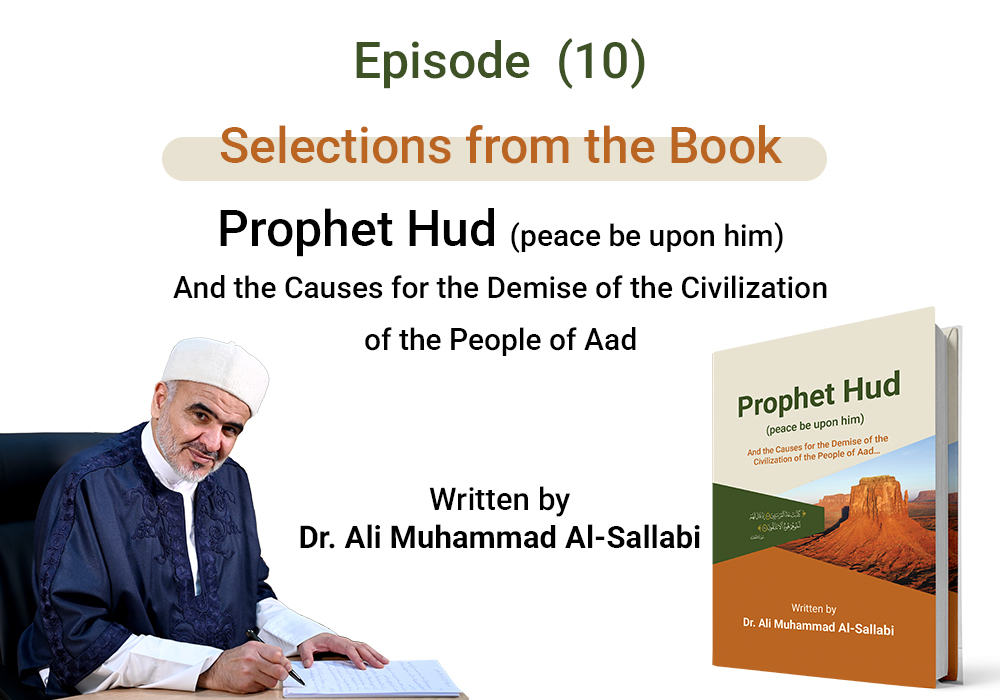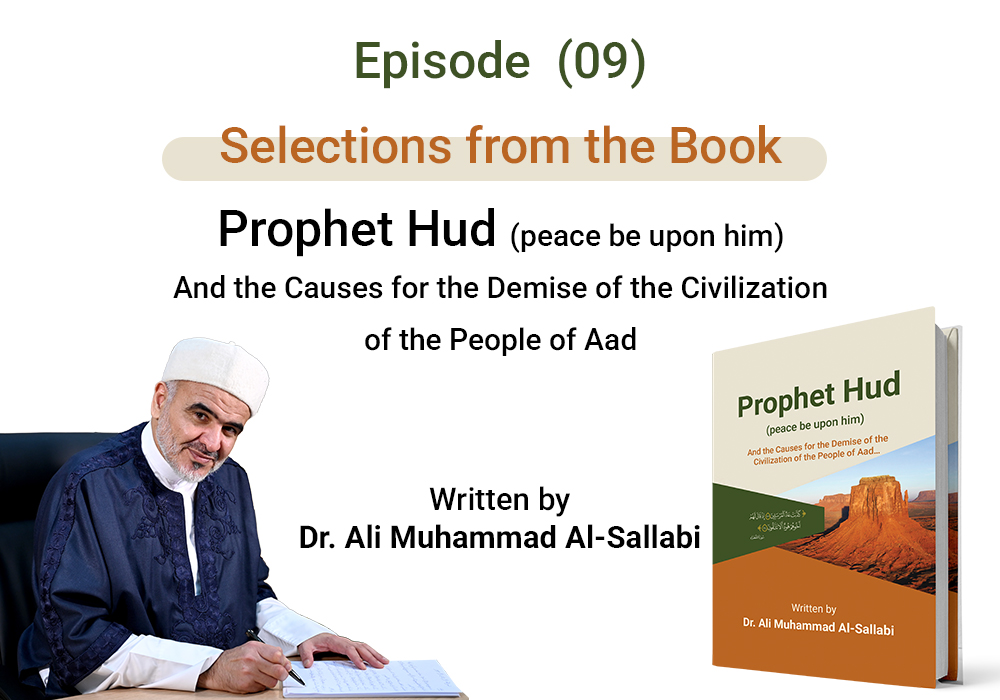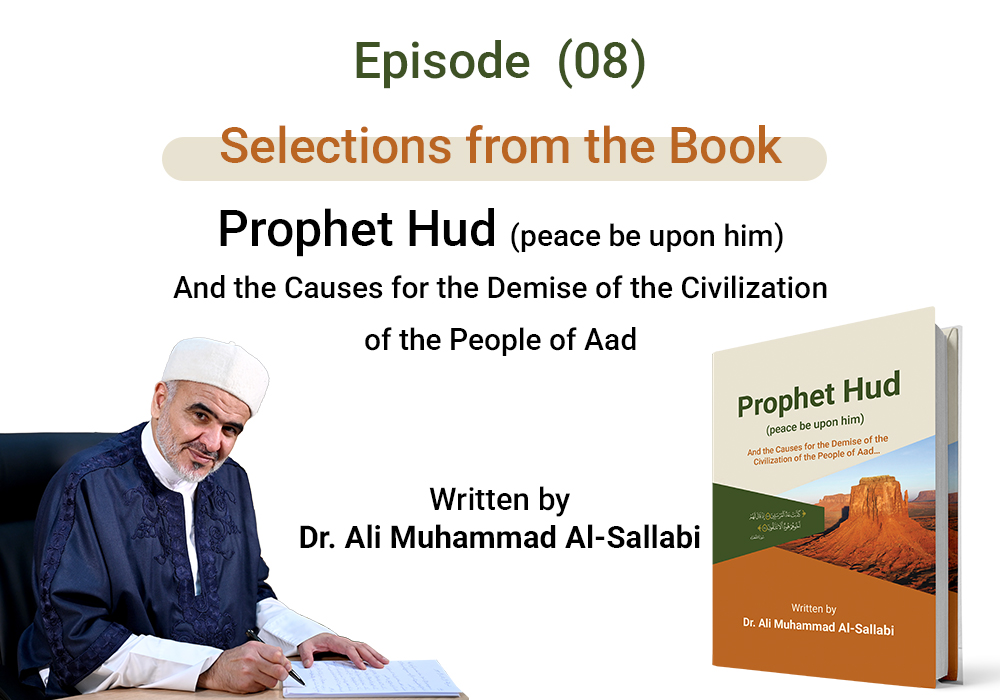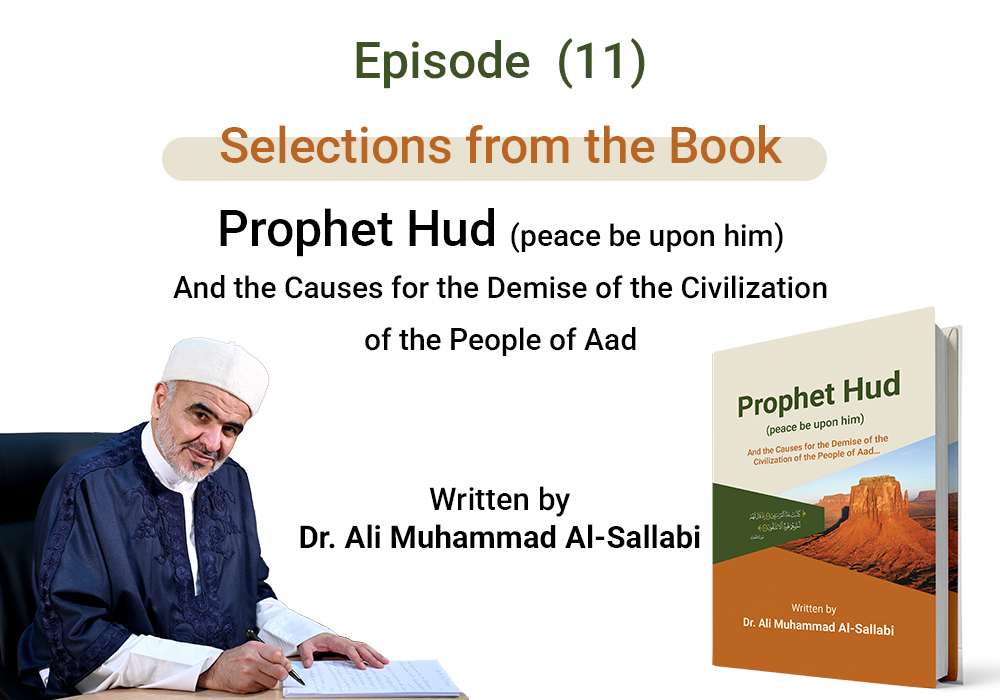The First Semitic Nations
Selections from the Book Prophet Hud (peace be upon him) And the Causes for the Demise of the Civilization of the People of Aad…
Written by Dr. Ali Muhammad al-Sallabi...
Episode (10)
The earliest inhabitants of the land of Arabia were the first to live there, but they later left for various reasons and spread into the lands of Babylon, Egypt, and the Levant. Arab historians call them "the vanished nations" because they flowed out of their land and were swept away by the winds of time, or because the events of history and the passage of time led to their demise. Some historians refer to them as the "naked Arabs," as they were the pure Arabs who had no contact with other races. They are called ‘Amaliq by the Jews.
European archaeologists do not refer to these nations by their different names but instead call them the Semites. As for the Arabs, they name each tribe by its name as it was known in its different periods, such as ‘Aad, Thamud, Jurhum, Lihyan, Tasm, Jadis, and other tribes. ‘Aad was the largest of these tribes and the most influential. It uniquely held power among the other vanished Arabs. According to Arab traditions, it had powerful and mighty states in the land of Arabia, as well as states in Babylon and Egypt. Most Arab historians believe that the genealogy of these vanished tribes traces back to Iram son of Sam and his various branches. However, their opinions differ on the specific branches to which they belong.
We will present the genealogies of the tribes of Iram from two sources: one ancient source, al-Ma‘arif by Ibn Qutaybah, and the other a later work, Saba’ik al-Dhahab by al-Suwaydi.
|
Ibn Qutaybah |
Al-Suwaydi |
|
Amaliq, son of Laud, son of Iram, son of Shem |
Amaliq, son of Laud, son of Iram, son of Shem |
|
Jadis, son of Laud, son of Iram, son of Shem |
Jadis, son of Iram, son of Shem |
|
Aad, son of Aws, son of Iram, son of Shem |
Aad, son of Aws, son of Abeel, son of Iram, son of Shem |
|
Thamud, son of Ja'ir, son of Iram, son of Shem |
Thamud, son of Ja'ir, son of Iram, son of Shem |
|
Tasm |
Tasm, son of Laud, son of Shem |
It is difficult to verify these mentioned genealogies, and Ibn Khaldun attempted to solve these issues. However, searching for light in absolute darkness is futile. There is no doubt that they are the descendants of Sam, and taking a step forward, one could say that the Aramean era predominated over them, as many Aramaic words exist in the Arabic language—that is, they became Arabized. The Thamud inscriptions that were found are in the Aramaic script.
Thamud itself was called Iram, and ‘Aad was part of Iram's name. It was said, "Aad Iram". When they perished, it was said, "Thamud Iram", and when they were destroyed, it was said, "Nimrod Iram."
The inscriptions discovered in Babylon, Assyria, the Levant, Canaan, Phoenicia, and the northern parts of Arabia are in Aramaic or contain many Aramaic words. When a great nation gains power, one part of it stands out from the rest, and the entire nation is known for its strength, attributed to that part. Therefore, a portion of the many Semitic nations must stand out as the ruling power, and all other parts must submit to it, no matter what that part is called. The Arabs call it ‘Aad, and there is no issue with terminologies.
Some European writers may regard ‘Aad as a myth, but this is a grave mistake. Recent research and discoveries have confirmed that the Arabs—meaning the ancient nations—were a large group that established powerful states in Babylon, Egypt, and the Levant. This is the reality. If the Arabs call these ancient nations the "vanished nations" and refer to their people as ‘Aad, Thamud, Tasm, and Jadis in their language, does naming them this way erase the reality?
The most authentic source for us is the Holy Quran, which speaks of the truth of 'Aad, saying: {Have you not considered how your Lord dealt with ʿAad – (6) [With] Iram - who had lofty pillars, (7)} [Al-Fajr: 6-7]. From this verse, it becomes clear that 'Aad is part of Iram. Allah also says in another place: {Then do you wonder that there has come to you a reminder from your Lord through a man from among you, that he may warn you? And remember when He made you successors after the people of Noah and increased you in stature extensively. So remember the favors of Allah that you might succeed."} [Al-A'raf: 69]. The first powerful state that appeared in the land of Arabia after the destruction of the people of Noah, in the language of the Holy Quran, is 'Aad. Is this not the reality of the ancient Semitic nations?
- Ali Muhammad al-Sallabi, Prophet Hud (peace be upon him) And the Causes for the Demise of the Civilization of the People of Aad, pp. 191-194.
- History of the Land of the Qur’an, p. 138.
- Ibn Khaldun's History, 2/71.
- Encyclopædia Britannica, 24/226.
- Al-Maarif, p. 10.
For further information and review of the sources for the article, see:
The Book of Prophet Hud (peace be upon him) And the Causes for the Demise of the Civilization of the People of Aad on the official website of Sheikh Dr. Ali Muhammad al-Sallabi:






